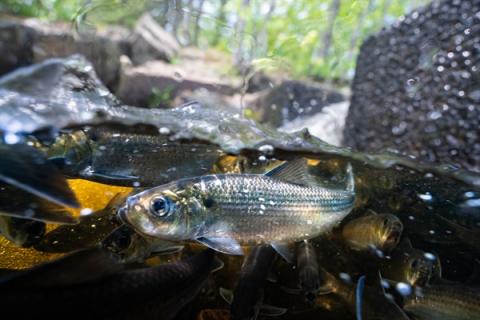Downriver and Out to Sea

Sea run fish – fish that migrate between fresh and saltwater – have always been in the hearts, minds and plates of New Englanders.
These fish hold meaning to many New England communities as food, as income, as history and as a key part of a functioning ecosystem. But many unknowns about these fish remain – like why some species are disappearing. Across New England, Sea Grant researchers are working to understand how these populations are changing, what habitats are most important to them and how to restore once vibrant runs of sea run fish. A new four-part series from New Hampshire Sea Grant follows these researchers in Maine, Massachusetts and New Hampshire and the ways their research connects to the entire Gulf of Maine, sharing their success with the entire region.
The four-part series includes the following chapters:
The forgotten migratory fish
Solving the riddle of disappearing rainbow smelt in New Hampshire
(New Hampshire Sea Grant)
If you restore it, they will come
Plymouth, Massachusetts rethinks its river for its residents, and also the people that live there
(Woods Hole Sea Grant)
A history of herring, and harvest
Reviving a small-town harvest in the only state where herring are healthy enough to be fished
(Maine Sea Grant)
As young fish go, so goes the river
Before we can truly help herring recover, we need to understand the parts of their lives still in the dark
(MIT Sea Grant and Woods Hole Sea Grant)